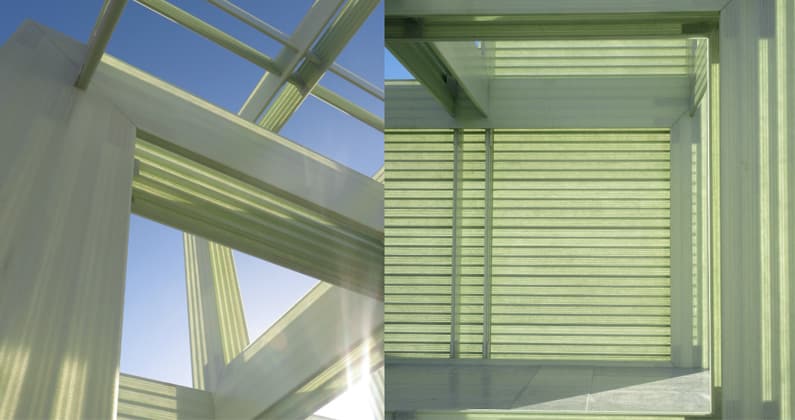Generic structure cell

Photo af: Construction with glass fiber laminates, Vicki Thake
Exhibition period
January 11 - June 10, 2016
Supported by
The project was sponsored by Realdania and Dreyers Fond
Which materials should we use in the future when building housing? From January till March you could follow the construction of the “Generic Structure Cell” that was a project experimenting with new materials.
From January and until June 10, 2016, it was possible to experience the construction “Generic Structure Cell” in front of the Danish Architecture Center. The project was an investigation of how to live and build in the future where fiber-reinforced composite and textile was tested as building materials. Working with layers of different materials opened up for studying and creating new spatial perceptions.
The project was developed throughout the exhibition period, and hence started with being just a raw construction to having facades and textile in its inner spaces. In this way the viewer could follow the project’s genesis and see how the structures were assembled and evolved.
Fiberglass fram for the fabric on the cell
The construction was installed with a new framework developed by translucent glass fiber laminates supplied by Fiberline Composites, which carried a new layer of digital coded textile fiber structure. The fiberglass frame and fabric was developed in collaboration with Mette Rams Thomsen (CITA), Vicki Thake (Industrial PhD students), Jan Søndergaard (KHR Architects), research assistants and students from KADK and carpenter apprentices from Copenhagen Technical School. The new layer of frp-structure examined the juxtaposition of materials with translucent properties. The material was the screen, the receiver and the retailer of light and the silhouettes. In new dialogue with fiber composites, we developed and applied in this case a fabric with a neutral geometric pattern. Hence, it was the environment that created and printed the different universes created by the constant changeability of the daylight. The material and tectonics together created the homogeneous coherent geometric structure, which mediated the effects that came from the environment and nature.
Science, technology and the material have in this development between research, practice and industry been used as a guide to new architectural juxtapositions. This was done through observations and experiments with the fiber-reinforced polymer composites that commands new spatial dimensions in its play with its special characteristics and relationship to light.